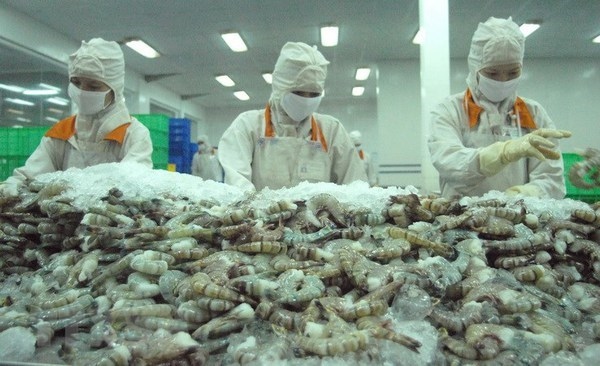Agro-forestry-aquatic product exports rise over 13% in eight months
Import-export revenue of agro-forestry-aquatic products was estimated to reach US$66.2 billion in the first eight months of 2022, up 8.7% year on year, of which export turnover hit about US$36.3 billion, a year-on-year rise of 13.1%, reported the Ministry of Agriculture and Rural Development.
With the results, Vietnam's agro-forestry-fishery sector enjoyed a trade surplus of over US$6.3 billion in the period, a surge of 94.6% over the same period last year.
In August, export earnings from these products hit nearly US$4.4 billion, rises of 32% year on year and 0.3% month on month.
The export value of major agricultural products was estimated at over US$1.8 billion, while that of major aquatic products was over US$1.4 billion, aquatic products US$893.8 million, and livestock products US$41.6 million.
In the January-August period, seven products and product groups had export value exceeding US$2 billion, including coffee, rubber, rice, vegetables and fruits, cashew nuts, shrimp, and wooden furniture.
Upturn was seen in the export of many products such as coffee (40.3%), rubber (8.1%), rice (8.1%), peppercorn (8.2%), cassava and cassava products (22.5%), tra fish (82.6%), shrimp (22%), and furniture (6.5%).
However, downturn was also recorded in some products, including vegetables and fruits (13.9%), cashew nuts (nearly 10.4%), and livestock products (12.3%).
In the first eight months of this year, Asia remained the major market for Vietnamese agro-forestry-aquatic products, accounting for 43.1% of the total export volume, while America ranked second with 28.9%, Europe 11.8%, Oceania 1.7%, and Africa 1.6%.
The US continued to be the largest export market of Vietnam in the period with revenue of nearly US$9.6 billion, followed by China with about US$6.5 billion, and Japan with over US$2.7 billion.
The MARD said that it is working with Vietnamese agencies at home and abroad to expand export markets for Vietnamese agro-forestry-aquatic products, while effectively implementing bilateral and multilateral free trade agreements that Vietnam has signed, and supporting people and businesses to meet export requirements for their products.

